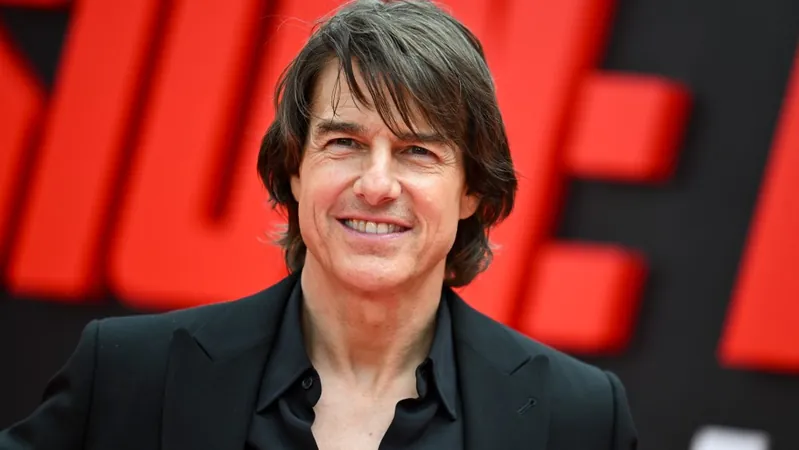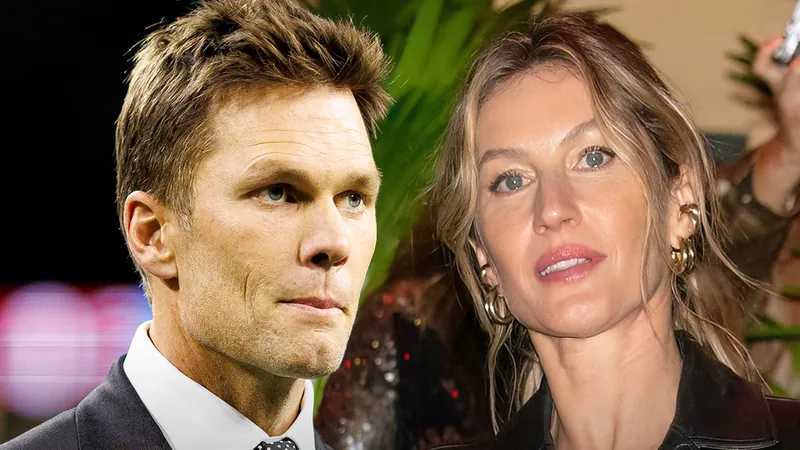
Bringing Back the Moa: Peter Jackson's Epic Collaboration with Colossal Biosciences
2025-07-14
Author: Amelia
A Jurassic Park Vision in New Zealand
Oscar-winning director Peter Jackson, famed for his work on 'The Lord of the Rings,' has partnered with Colossal Biosciences, a pioneer in genetic engineering, for an ambitious project that sounds like something out of a movie. Together, they aim to resurrect the giant moa, the largest bird to ever roam New Zealand, long extinct due to human actions. This project signifies not only a leap in science but also deep cultural significance for the Māori people, who have historical connections to the moa.
The Giant Moa: A Colossal Challenge
Once towering at 11 feet (3.35 meters) and weighing up to 500 pounds (226.8 kg), the giant moa vanished shortly after the Polynesian settlers arrived in New Zealand around the late 1200s. Within a mere 150 years, these majestic creatures, along with their smaller relatives, ceased to exist. Now, Jackson and Colossal Biosciences are poised to bring this magnificent bird back to life using front-line genetic technology.
Cultural Roots and Scientific Ambitions
Jackson's financial backing comes alongside crucial support from the Ngāi Tahu Research Centre at the University of Canterbury. The return of the moa is seen as more than mere scientific achievement; it's a chance for the Māori tribe of Ngāi Tahu to reconnect with their ancestry. Mike Stevens, the Centre's Director and a member of Ngāi Tahu, notes, "Reviving the moa represents a profound understanding of our history."
Genetic Resurrection: A Partnership with Purpose
Led by geneticists from Colossal Biosciences, who have previously made headlines with attempts to revive species like the woolly mammoth, the project involves sequencing and reconstructing the moa's genome using remains found in New Zealand's caves. Peter Scofield, a moa expert and professor, believes that this research could yield invaluable insights into prehistoric ecosystems and the significant role the moa played in them.
Peter Jackson: A Passionate New Adventure
For Jackson, this initiative offers a thrilling shift from film making to groundbreaking science. He expressed pride in his New Zealand heritage and sees the project as a chance to restore the legacy of the country's most notable bird, which has become an emblem of national pride.
Navigating the Challenges of De-Extinction
However, reviving the moa is fraught with challenges. The team aims to keep any revived birds in controlled environments to safeguard against modern threats such as habitat loss and introduced species. This approach mirrors other de-extinction efforts, ensuring that the moa is secured in an ecological haven.
The Ecological Significance of the Moa Revival
While the complexities of reviving an extinct species like the moa are daunting, the project holds transformative potential for understanding ancient ecosystems. Experts speculate that studying the moa's interactions with its environment could revolutionize our comprehension of prehistoric life. The involvement of the Māori iwi adds a rich cultural layer, intertwining the moa’s revival with the community's journey towards ecological and cultural restoration.
Mike Stevens reflects on this vision: "This is part of our dream," underscoring the community's desire to reconnect with a piece of their past that was lost to history.









 Brasil (PT)
Brasil (PT)
 Canada (EN)
Canada (EN)
 Chile (ES)
Chile (ES)
 Česko (CS)
Česko (CS)
 대한민국 (KO)
대한민국 (KO)
 España (ES)
España (ES)
 France (FR)
France (FR)
 Hong Kong (EN)
Hong Kong (EN)
 Italia (IT)
Italia (IT)
 日本 (JA)
日本 (JA)
 Magyarország (HU)
Magyarország (HU)
 Norge (NO)
Norge (NO)
 Polska (PL)
Polska (PL)
 Schweiz (DE)
Schweiz (DE)
 Singapore (EN)
Singapore (EN)
 Sverige (SV)
Sverige (SV)
 Suomi (FI)
Suomi (FI)
 Türkiye (TR)
Türkiye (TR)
 الإمارات العربية المتحدة (AR)
الإمارات العربية المتحدة (AR)